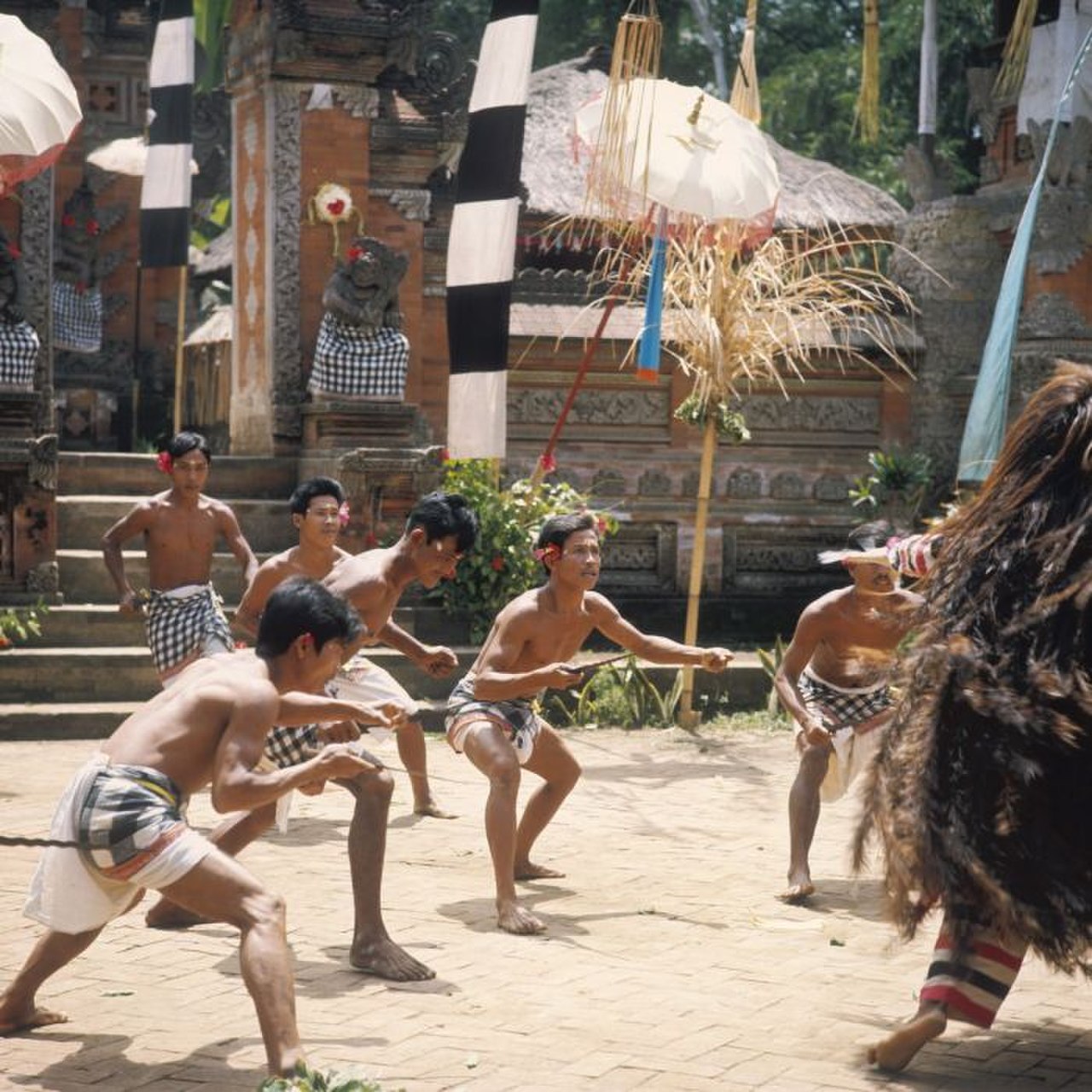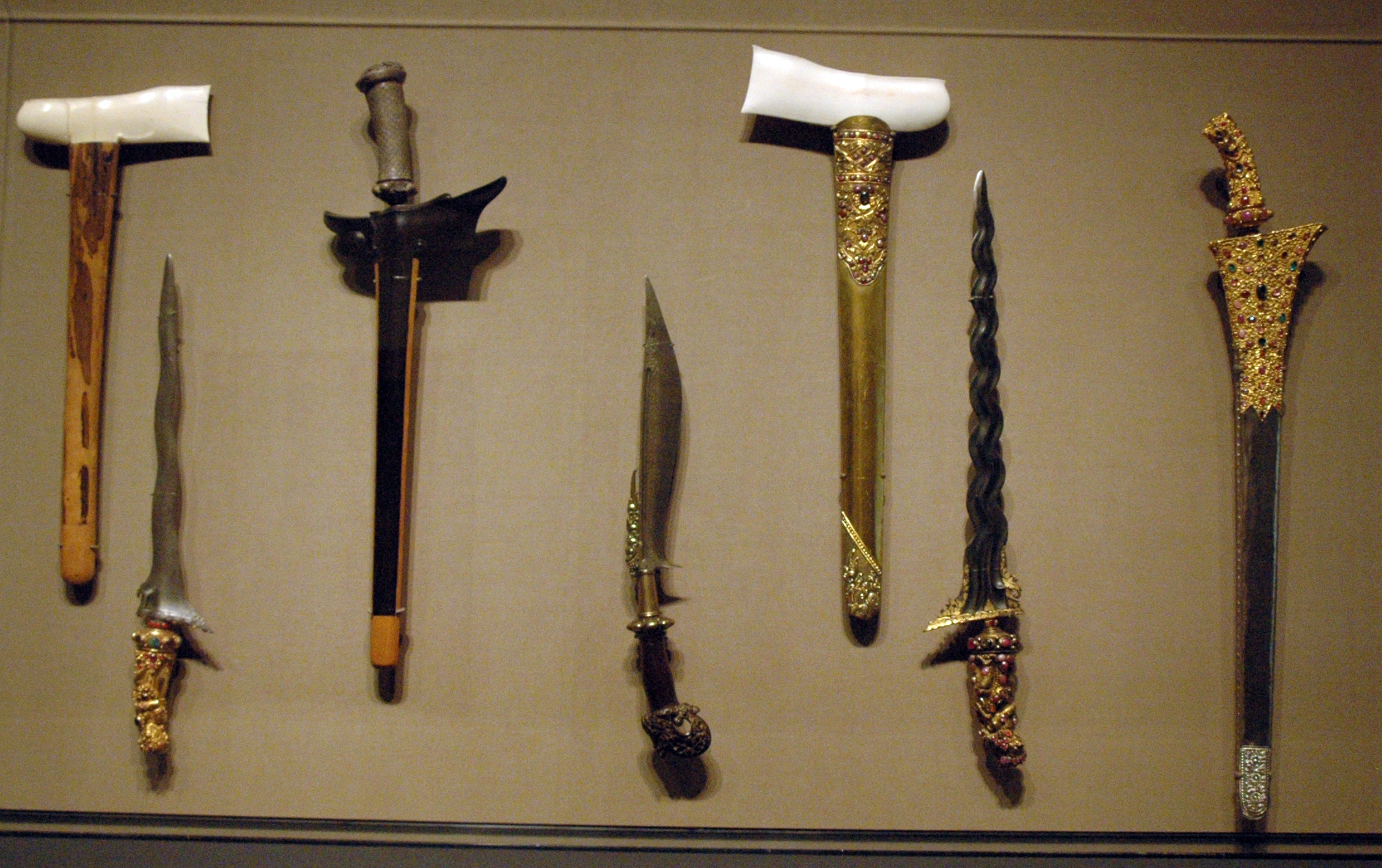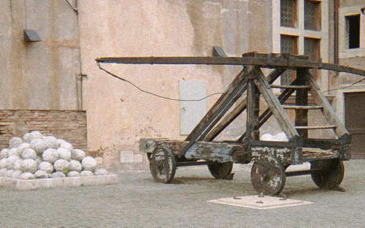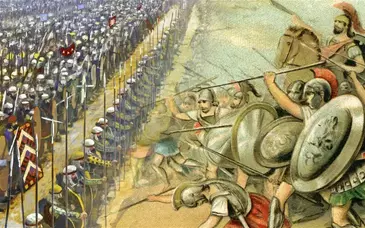Kris (or Keris): an asymmetrical dagger
The kris or keris is an asymmetrical dagger indigenous to Indonesia, Malaysia, Singapore, Thailand and Brunei. It is known as kalis in the southern Philippines. The kris is famous for its distinctive wavy blade, but many have straight blades as well. Both a weapon and spiritual object, kris are often considered to have an essence or presence, with some blades possessing good luck and others possessing bad.
In 2005, UNESCO gave the title Masterpiece of the Oral and Intangible Heritage of Humanity to the kris of Indonesia. In return, UNESCO urged Indonesia to preserve their heritage.

The origin of the word kris derived from the old Javanese term ngiris which means to stab, wedge or sliver. "Kris" is the more frequently-used spelling in the West, but "keris" is more popular in the dagger's native lands, as exemplified by the late Bambang Harsrinuksmo's popular book entitled Ensiklopedi Keris (Keris Encyclopedia). Two notable exceptions are the Philippines, where it is usually called kalis or kris, and Thailand where it is always spelled and pronounced as kris. Other spellings used by European colonists include "cryse", "crise", "criss", "kriss" and "creese".

Kris history is generally traced through the study of carvings and bas-relief panels found in Southeast Asia. It is widely believed by archaeologists that the earliest kris prototype can be traced to Dong Son in Vietnam circa 300 BC. From there, the design would have been brought into present-day Malaysia by Cham migrants who made their way into the Malay Peninsula twenty centuries ago. Another theory is that the kris was based on daggers from India. Frey (2003) concludes from Raffles' (1817) study of the Candi Sukuh that the kris recognized today came into existence around 1361 AD in the kingdom of Majapahit. There exist claims of earlier forms predating the Majapahit kris but none are verifiable. In the past, the majority of kris had straight blades but this became less frequent over time. Some of the most famous renderings of a kris appear on the Borobudur temple (825 CE) and Prambanan temple (850CE). Tome Pires, in early 16th century, describe the importance of Kris to the Javanese:
"... every man in Java, whether he is rich or poor, must have a kris in his house .. and no man between the ages of 12 and 80 may go out of doors without a kris in his belt. They carry them at the back, as daggers used to be in Portugal..."
Kris were worn on a daily basis, especially when travelling because it might be needed for self-defense. Heirloom blades were handed down through successive generations and worn during special events such as weddings. Men usually wore only one kris but the famous admiral Hang Tuah is said in the Hikayat Hang Tuah to have armed himself with one short and one long kris. As women were also permitted to learn silat, they sometimes also wore kris, though of a smaller size than a man's.
Kris were often broken in battle and required repairs. Yearly cleanings, required as part of the spirituality and mythology surrounding the weapon, often left ancient blades worn and thin. The repair materials depended on location and it is quite usual to find a weapon with fittings from several areas. For example, a kris may have a blade from Java, a hilt from Bali and a sheath from Madura.
In many parts of Indonesia, the kris was the choice weapon for execution. The executioner's kris had a long, straight, slender blade. The condemned knelt before the executioner, who placed a wad of cotton or similar material on the subject's shoulder or clavicle area. The blade was thrust through the padding, piercing the subclavian artery and the heart. Upon withdrawal, the cotton wiped the blade clean. Death came within seconds.

The kris usually has a curved pistol-grip hilt that aids in stabbing strikes. It allows the palm of the holding hand to add pressure to the blade while stabbing. A kris only offers minimal protection for the hand by the broad blade at the hilt. In rare cases, the blade may be forged so its axis lies at an angle to the hilt's axis. The intention is to get the blade automatically turning to slip past the ribs but this works poorly and makes the weapon less durable.
In battle, a fighter carried three kris: his own, one from his father-in-law, and one as a family heirloom. The extra two served as parrying daggers but if none were available, the sheath would serve the same purpose.
The making of a kris was the specialised duty of metalworkers called empu or pandai besi. In Bali this occupation was preserved by the Pande clan to this day, members of whom also made jewellery. Kris-makers did more than forge the weapon, they carried out the old rituals which could infuse the blade with mystical powers. For this reason, kris are considered almost alive because they may be vessels of spirits, either good or evil. Legends tell of kris that could move of their own volition and killed individuals at will. Some kris are rumored to stand upright when their real names are called by their masters. It was said that some kris helped prevent fires, death, agricultural failure, and many other problems. Likewise, they could also bring fortune, such as bountiful harvests. Many of these beliefs, however, were erroneously derived from the possession of different kris by different people. For example, there is a type of kris in Java that was called Beras Wutah, which was believed to grant its possessor an easy life without famine. In reality, this kris was mainly assigned to government officers that were paid, in whole or in part with foodstuff such as rice.
There are several ways of testing whether a kris is lucky or not. A series of cuts on a leaf, based on blade width and other factors, could determine if a blade was good or bad. Also, if the owner slept with the blade under their pillow, the spirit of the kris would communicate with the owner via dream. If the owner had a bad dream, the blade was unlucky and had to be discarded, whereas if the owner had a good dream the dagger would bring good fortune. However, just because a blade was bad for one person didn't mean it would be bad for another. Harmony between the weapon and its owner was critical.
Because some kris are considered sacred and believed to possess magical powers, specific rites needed to be completed to avoid calling down evil fates which is the reason warriors often made offerings to their kris at a shrine. There is also the belief that pointing a kris at someone means they will die soon, so silat practitioners precede their demonstrations by touching the points of the blades to the ground so as to neutralise this effect.

One of the most famous legends from Java describes a legendary bladesmith called Mpu Gandring and his impatient customer, Ken Arok. The customer ordered a powerful kris to kill the chieftain of Tumapel, Tunggul Ametung. Ken Arok eventually stabbed the old bladesmith to death because he kept delaying the scheduled completion of the kris. Dying, the bladesmith prophesied that the unfinished or incomplete kris would kill seven men, including Ken Arok. The prophecy finally came true, with four men enlisted as the kris' first death roll, including Mpu Gandring himself, Tunggul Ametung, Kebo Ijo to whom Ken Arok lent the weapon, and finally Ken Arok himself. The unfinished kris then disappeared.
Another version of the tale describes that the kris passed to Ken Arok's stepson Anusapati which in turn killed his stepfather after recognized that his genuine father was killed by Ken Arok with the same kris. The bloody revenge continued on and on until the reign of Kertanegara, the last king of Singhasari kingdom.
Another Javanese folk story tells of Arya Penangsang, who was killed by his own kris. The scene happened at the end of a battle to re-unite the collapsed kingdom of Demak-Bintara, fought between Jaka Tingkir of Pajang and Penangsang, of Majapahit royalty. The story tells that he fought the battle with Hadiwijaya's adopted son, who would become the first ruler of the Mataram dynasty, Danang Sutawijaya. Penangsang inadvertently stabbed himself when he sheathed his kris, gutting his own belly. He soon fell down, bathing in his own blood, which was flowing from the wound. While he was dying, he encircled his scattered intestines on his kris. The tradition of putting a jasmine chain around the kris' hilt might have come from this tale.
The Keris Taming Sari (translation: Flower Shield Kris) (Taming Sari's kris) is one of the most well-known kris in Malay literature, said to be so skilfully crafted that anyone wielding it was unbeatable. In some versions of the legend, the weapon would grant its user physical invulnerability. Tun Sri Lanang's book, the Sejarah Melayu, tells that it was first used by the champion of Majapahit, a pendekar named Taming Sari. He was defeated in a duel to the death by the Melakan admiral Hang Tuah, after which the king of Majapahit presented the weapon to the victor.
After being framed by a jealous official, Hang Tuah was ordered to be executed, but he managed to escape and go into hiding with the help of a minister who knew the truth. Hang Tuah's kris and title of Laksamana (admiral) were passed on to his comrade Hang Jebat. Furious that his best friend was unfairly put to death, Hang Jebat rebelled against the royalty and took over the palace. The desperate ruler of Melaka pardoned the minister so long as Hang Tuah could win him back the throne. Having trained under the same master since childhood the two friends were nearly equals but of the two, Tuah was the superior fighter. However, even after a long battle in the palace, neither could best the other because the Kris Taming Sari evened the odds. Only after taking his weapon back did Hang Tuah manage to stab Jebat, who died soon after.


